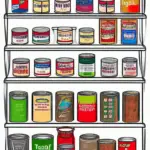When it comes to work organisation, it is crucial that you are well-organised. This means creating a daily routine, using a color-coded to-do list, and ensuring that paperwork is well-organized. This way, you will know exactly what you have to do at any time.
Time blocking
Time blocking can be an effective tool for improving time management. By planning specific blocks of time, you can ensure that important tasks are completed and that you have time for self-care. It also helps you avoid wasting time by not allowing interruptions. The most common mistake is underestimating the time needed to complete a task. If you find that your tasks take up too much time, you can adjust the block accordingly to accommodate extra time.
Besides boosting your productivity, time blocking can reduce the stress caused by long lists of to-dos. A lengthy list of to-dos can lead to a sense of anxiety and stress, a phenomenon called the Zeigarnik effect. By creating a time block for each task, you can avoid this stress and create a sense of security and calm. You can also use time blocking to help you set priorities.
Time blocking can also be used to manage your family and work time. It helps you focus on the right tasks at the right time. Make a to-do list each day that includes work, family and personal tasks. Once you’ve planned a few days ahead, you can use the blocked time to complete each task.
Time blocking can be useful for many people. It helps people allocate more time to important tasks, which prevents multitasking and procrastination. However, it is only effective if you know what you should be doing at what time. By setting clear goals and creating a schedule, you will be more likely to stick to them.
If you have a busy job, it is difficult to manage your time effectively. Moreover, you may have problems completing urgent tasks. Consequently, you may have problems achieving work-life balance and fitting in time for fun. If you are tired of being overwhelmed by your daily tasks, time blocking can help you manage your time and avoid procrastination.
Creating a daily routine
Creating a daily routine is a powerful way to stay organised, productive, and stress-free. It also helps you break bad habits and prevent burnout. Your daily routine can range from drinking lemon water and tea to saying ‘thank you’ to tackling your hardest task first.
You can create a daily routine by breaking your day into sections. For example, the first hour of the day could be dedicated to returning voicemail, the second hour could be for sales-related tasks, and the final hour could be reserved for client meetings. A daily routine will help you get the most done in the least time.
Creating a daily routine for work organisation is a great way to stay organised and stress-free. It is a very simple process and can help you organise any area of your life. A free 30-minute guide can show you how to create a daily routine in 30 minutes or less.
A daily routine also helps people prioritize tasks and block out distractions. It forces you to think about what you want to do and when. Creating a daily routine will help you work more efficiently and have more free time. You can also use this time for other activities, such as socialising and relaxing.
Creating a color-coded task list
Color coding your task list helps you prioritize tasks by color. The darker shade indicates the highest priority, while the light shade indicates the lowest priority. Red is for the most urgent tasks, orange for the next most urgent, and yellow for the least important tasks. If you have an irregular schedule, color coding is a great way to keep track of tasks.
First, pick your colors. A simple scheme works better than a complicated one. For example, you could label your business’s finances with green, while red is for urgent or emergency items. Blue, on the other hand, would be used for notes taken during meetings.
Color coding is a great way to organise your schedule and office. It can help you stay focused and get more work done. By color-coding your work area and your calendar, you’ll be able to keep track of all your tasks and ensure they’re completed efficiently.
Color-coding is especially helpful for project managers who must balance multiple projects. It will prevent projects from becoming too similar. It also helps you reduce physical clutter, which promotes better work and clear thinking. Plus, it makes reports to leadership and progress updates easy at a glance. Color-coding your project will help you see all of its parts without feeling overwhelmed.
Keeping paperwork organized
Filing and organizing documents is vital to reducing the amount of paper clutter at work. Filing systems that allow you to sort and color-code documents according to type can help you manage the amount of paperwork. It is also possible to shred documents that are no longer relevant. Using a recycling bin or a dedicated basket near your desk can also help you keep your workspace tidy. This practice will prevent piles of paper from building up, which can be a fire hazard and trip hazard.
You can also designate a specific area or inbox where you can keep incoming paper. This way, all of the necessary papers can be stored and easily accessible. You can even scan paperwork to save space and reduce the number of paper piles that can accumulate. By following these tips, you will be well on your way to keeping paperwork organized at work.
You should also make sure that all office supplies are sanitized to avoid the spread of diseases. Keeping everything sanitized will also help you stay flu-free. You can also make a table of contents for your paperwork binder, which will make it easier for you to find documents.
File shelves are another great way to organize documents. These are great for organizing daily documents and those you review often. By assigning specific categories to each shelf, you can streamline the process of filing new documents. This way, you won’t have to sift through piles of papers just to find the one you need.
Organizing your workspace
Organizing your workspace can help you keep your life and job in order. It requires little more than an hour of your time and a little creativity. The more organized your workspace is, the better you will be able to function. Here are a few tips to keep your workspace in order. Organizing your workspace is a great way to stay organized and on top of your projects.
First, you have to decide how you’re going to use your space. It’s best to make a list of the tasks that you will be performing on a daily basis and then organize them according to their importance. If you’re working in an office with others, you’ll want to create distinct work areas for each person, so you can focus on your work without distractions.
Keeping your workspace tidy can reduce stress, save time and create peace of mind. Make sure you have only the things you need on your desk, such as your current work files, daily supplies, and critical reference materials. Using task file folders can make your desk neat and efficient. Also, keep in mind that paper clutter can add up quickly.
If you work at home, organize your workspace to accommodate your needs. You should put items that you use regularly on your desktop and place items that you rarely use in a drawer or another convenient location. In addition to reducing clutter, you should also organize your workspace for accessibility. For example, if you are blind or have limited mobility, it’s best to have your desk accessible to you and your colleagues.
Organizing your workspace is a great way to increase productivity. Not only will you be more efficient, but your chances of getting promoted will go up. You’ll have more energy when you feel better if your workspace is clean and free of clutter.












